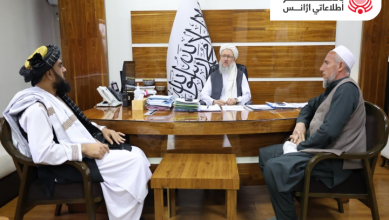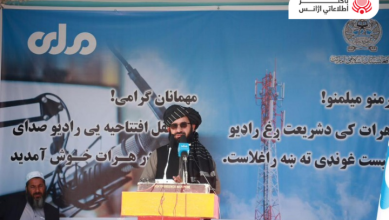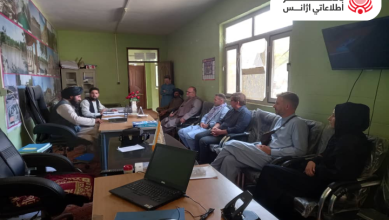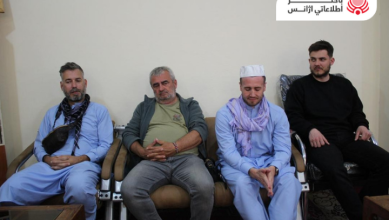
Saturday, July 29, 2017
Kabul (BNA) The 70th executive committee meeting of SAARC CCI which began on July 23rd and ended on July 25th in Thimphu of Bhutan, discussed lack of connectivity and information sharing among the countries of South Asia, which hinders the development of tourism sector in the region.
Lack of connectivity makes travelling difficult for tourists, which affects the tourism sector in South Asia region.
President with South Asian Association Regional Cooperation Chamber for Commerce and Industry (SAARC CCI), Suraj Vaidya, said that South Asia is the least connected region in the world and the focus of the meeting has been to make travelling easier in the region.
It was pointed out that dis-connectivity in the region has resulted due to lack of cooperation between private sectors and government, and the political situations in the region. It was discussed that to improve tourism sector in South Asia inter-regional tourism needs to improve which could be done by improving visa availability.
Addressing the meeting, Afghanistan’s deputy minister of information and culture Sayeda Mojgan Mostafavi said it was a pleasure for her to be in Bhutan, as this country is no ordinary place, calling the country last great Himalayan kingdom and magic, where a traditional Buddhist culture carefully embraces global developments.
“Tourism is one of the most important and largest industry in the world. Tourism is a key driver of socio-economic progress through export revenues, the creation of jobs and enterprises, and infrastructure development in many countries. According to the World Tourism Organization (UNWTO), inbound tourism has become one of the world’s major trade categories,” she added, saying South Asia possesses many valuable tourist resources and attractions, which could be important vehicles for reducing the widespread persistent poverty in South Asia.
Mostafavi went on saying since past few years, several organizations, including the South Asian Association for Regional Cooperation (SAARC), have focused on promoting intra-regional tourism by utilizing common resources, shared culture and common physical infrastructures.
“Declaring Bamyan as the first ever SAARC cultural capital in 2015 and holding of many festivals, aiming to further introduce the province to the people of not only South Asia, but the world, could be an example,” she recalled.
The deputy minister said despite several initiatives, tourism’s contribution to regional national economies, in terms of employment generation, foreign exchange earnings and national revenue, has remained minimal. “Complicated travel procedures, inadequate infrastructure and transport facilities and the poor quality of management and service, together with a negative image arising from safety and security concerns, have constrained intra-regional tourism across the region, in particular Afghanistan,” she said, adding inadequate political commitment and bureaucratic meandering are also the primary obstacles in promoting tourism and economic integration in South Asia.
“Afghanistan can thank its geographical position for its wealth. It sits at the heart of Central Asia, at the meeting point of ancient trade routes – known together as “The Silk Road” – that go out to all parts of Asia. Some lead east to China; some north to the great cities of Bokhara and Samarkand and then to the nomadic steppe; some south-east into India; and others east into Iran, which then lead to the Mediterranean Sea and Europe. Goods wanting to pass between any of these places had to go through Afghanistan, and thus Afghan cities, strategically placed on these trade routes, were able to benefit massively as places of mercantile exchange,” she said.
Afghanistan’s impact on world trade can be seen very far back in history, Mostafavi added, saying the blue lapis lazuli stone was exported from Badakhshan in Afghanistan to Egypt in 1300 BC. Even and around 2500 BC, lapis lazuli was exported from Afghanistan to Iraq for the harps buried with the kings of the ancient city, some of which can now be seen in the British Museum. “This shows how long the trade routes have been in operation, and how far they reached.”
According to her, Silk Road traditions, such as leaving scraps of clothing on roadside shrines, still persist, and the main element of Afghan custom, hospitality, can still be owed to the glory days of the Silk Road, when the merchant from the foreign land had to be received with courtesy, since he might not only bring wealth, but a revelation of faith as well.
“Tourism in Afghanistan was at its glorious best in the 1970s. Over 90,000 tourists visited Afghanistan from all over the world to see the unique beauty of the Country and experience the treat of one of the most hospitable group of people. Today, despite decades of war, Kabul remains a fascinating city that embraces both the old and the new. With the ever increasing presence of the international community and the ongoing redevelopment projects, Kabul has been given a touch of modern architecture that gives the city hope of a peaceful and prosperous future,” she noted.
Mostafavi told the meeting that Afghanistan has a history of more than six thousand years, with many historical sights and attractions, among these are the more than two thousand year old famous Buddha Statues, the tomb of Hazrate Ali) in Mazare Sharif, the, lakes of Band-e Amir and so many other places
“Afghanistan has also been of great strategic importance for invading armies, from Genghis Khan to Alexander the Great. All these armies have left astonishing trails behind, trails that have been forgotten due to decades of war but are yet to be discovered. The Government is working to rebuild the war torn infrastructure of Afghanistan, a major project to develop transport links and a nationwide telecommunication link between Kabul and the other provinces has being established.”
Pointing to Tourism activities in Afghanistan and to assist the Tourism Industry of Afghanistan, Mostafavi said the Government of Afghanistan, in particular the ministry of information and culture was working hard and strongly encouraged and offered its full support to the private sector to invest into the Tourism Industry. “With ever increasing global tourism, the Afghan Tourist Industry has tremendous potential to become profitable and now we registered around 1000 tourists companies.”
“Recently in this week a two day seminar entitled “Threats of terrorism before tourism in Afghanistan” was held and inaugurated by the President of Afghanistan, attended by a number of officials and guests from the neighboring countries, aiming to explore ways to boost the tourism industry and to tackle insurgency and militancy in war-torn Afghanistan,” she added, saying there are still strong reasons and developments enhancing regional tourism in South Asia. “The region is thriving economically led by the high growth South Asia is experiencing some dynamic changes conducive for a regional tourism. Therefore, the policymakers and strategists in tourism in South Asia should consider these macro dimensions in promoting South Asian regional tourism in 21st century.”
Mostafavi believes that tourism is an industry which encourages people to people interaction and enhances regional peace, saying the understanding among people that travel and tourism bring about is the best recipe for ensuring that conflicts are resolved through discussion and compromise, rather than through violent means.
The deputy minister went on saying the South Asia Chamber of commerce role was key in boosting the connectivity and tourism in the region, asking the organization to make strategies to promote multi-country tourism in a more cooperative mode.
“This should be done using appropriate marketing strategies with integrated pricing, products, promotional and distributional strategies to enhance intra-regional tourism.
Concluding her speech in Thimphu, Mostafavi said improvements should be made in air travel, road and land travel and also possible sea and river based transportation. “This will also include facilitation of simplified visa regimes, reduce the other entry barriers and easiness in transaction, taxation and also exchange control,” she added.
The Kabul Times
Yarzada




